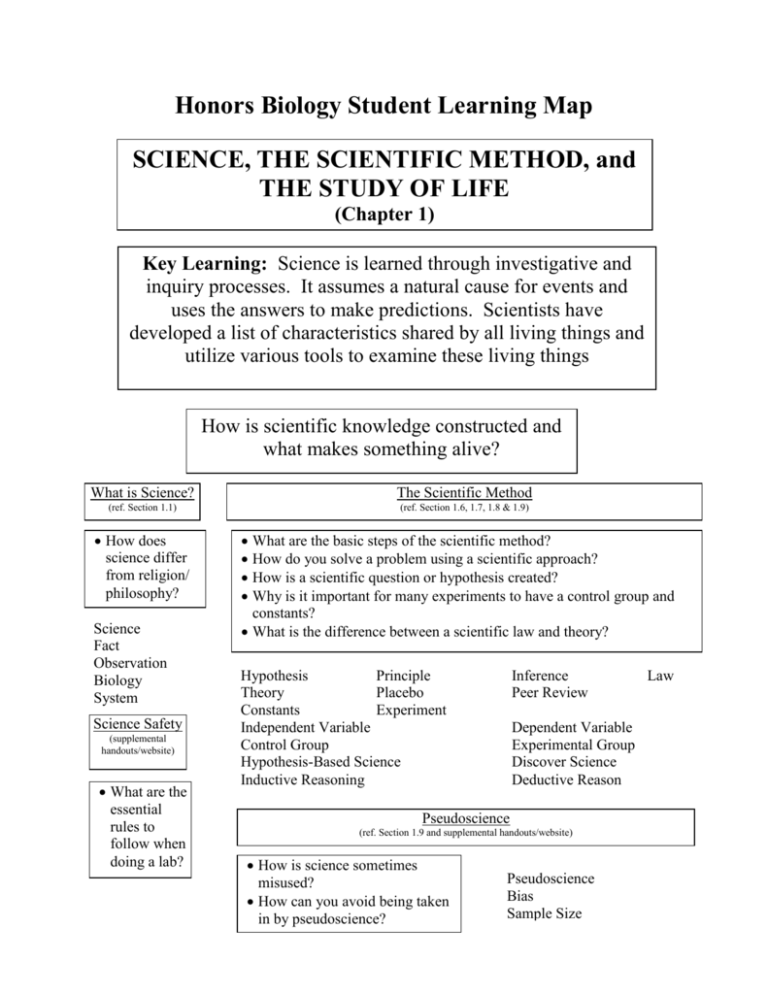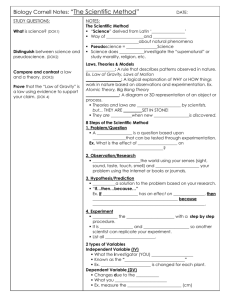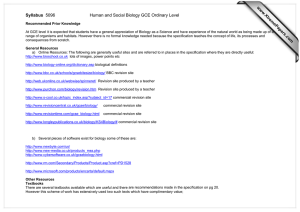SCIENCE AND THE SCIENTIFIC METHOD
advertisement

Honors Biology Student Learning Map SCIENCE, THE SCIENTIFIC METHOD, and THE STUDY OF LIFE (Chapter 1) Key Learning: Science is learned through investigative and inquiry processes. It assumes a natural cause for events and uses the answers to make predictions. Scientists have developed a list of characteristics shared by all living things and utilize various tools to examine these living things How is scientific knowledge constructed and what makes something alive? What is Science? The Scientific Method (ref. Section 1.1) (ref. Section 1.6, 1.7, 1.8 & 1.9) How does science differ from religion/ philosophy? Science Fact Observation Biology System Science Safety (supplemental handouts/website) What are the essential rules to follow when doing a lab? What are the basic steps of the scientific method? How do you solve a problem using a scientific approach? How is a scientific question or hypothesis created? Why is it important for many experiments to have a control group and constants? What is the difference between a scientific law and theory? Hypothesis Principle Theory Placebo Constants Experiment Independent Variable Control Group Hypothesis-Based Science Inductive Reasoning Inference Peer Review Dependent Variable Experimental Group Discover Science Deductive Reason Pseudoscience (ref. Section 1.9 and supplemental handouts/website) How is science sometimes misused? How can you avoid being taken in by pseudoscience? Pseudoscience Bias Sample Size Law Cell Specialization and Levels of Organization Characteristics of Life (ref. Section 1-2, 1-3, 1.4 & 1.5) (ref. Section 1.1) How are the cells of multicellular organisms specialized and organized to perform specific tasks? Organelle cell Tissue Organ Organ System Organism Population Community Ecosystem Biosphere What are the characteristics shared by all living things? How do organisms maintain homeostasis (e.g. thermoregulation, water regulation, oxygen regulation)? What are the central themes of biology? Cell Sexual Reproduction Asexual Reproduction Metabolism Homeostasis Homeostatic Mechanism Molecules Unicellular Multicellular Extracellular Intracellular Stimulus Consumer Producer Decomposer Prokaryotic Eukaryotic Taxonomy Kingdoms Domains Archaea Bacteria Eukarya Natural selection Evolution Evolutionary Adaptation




